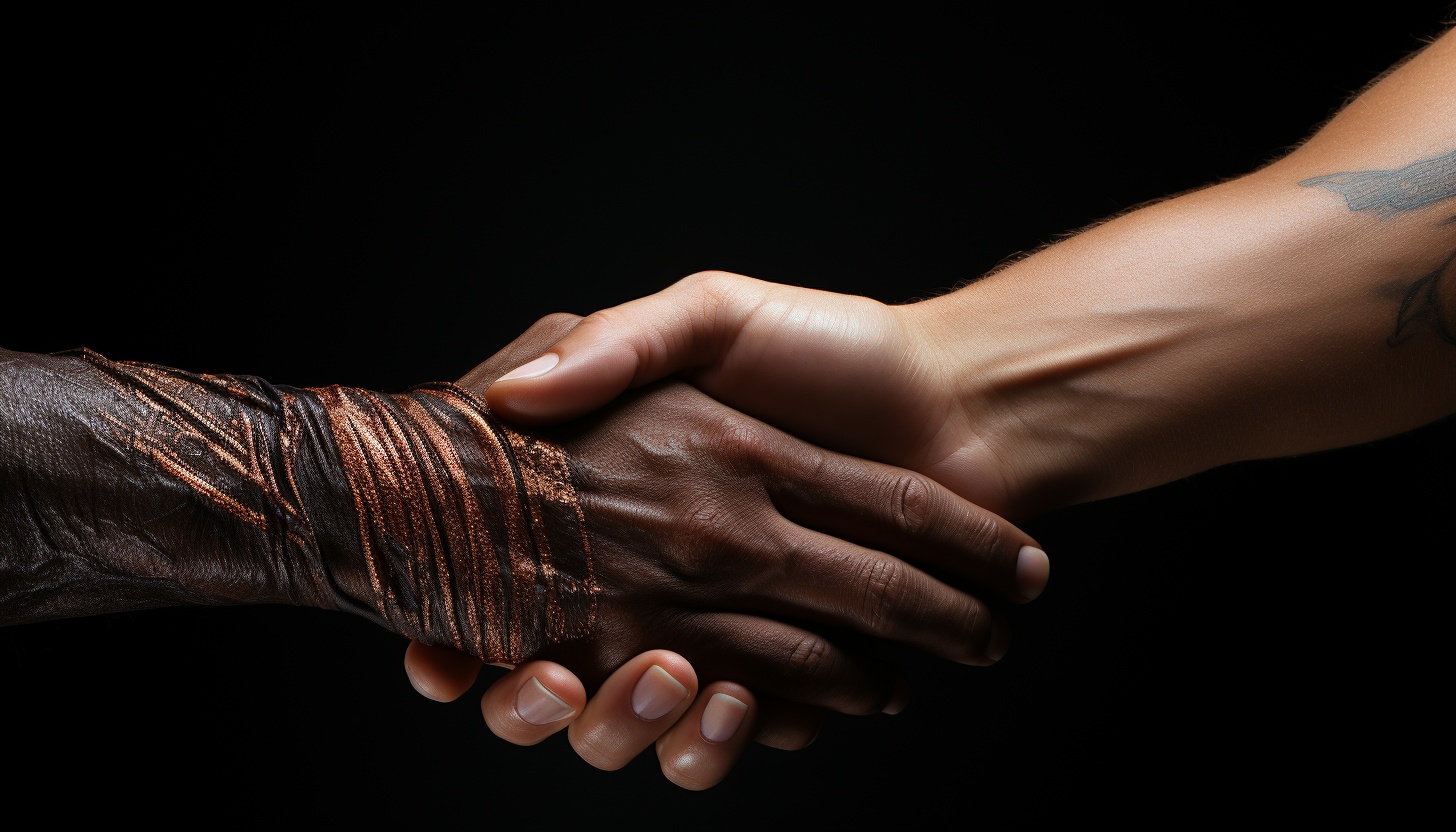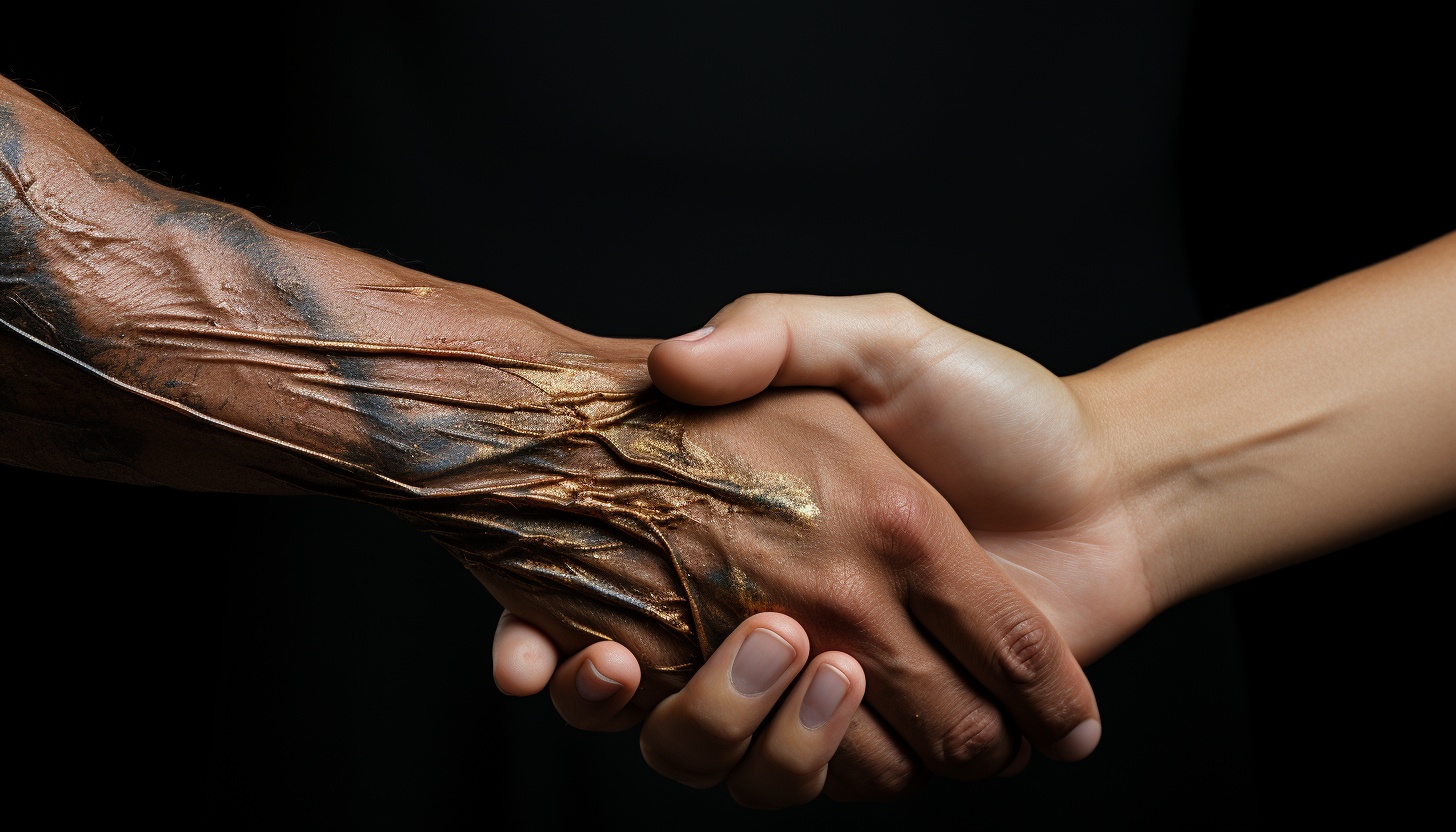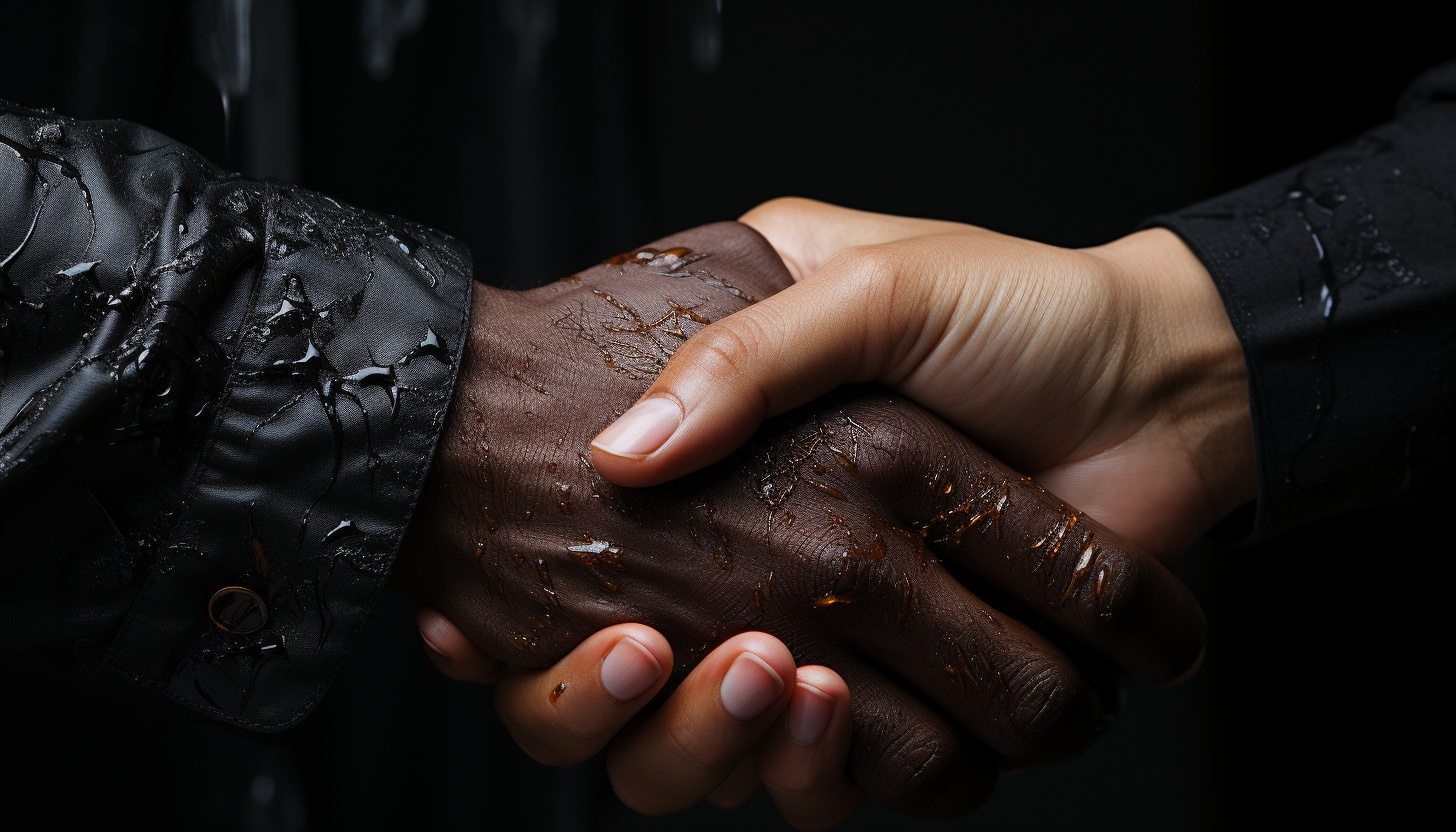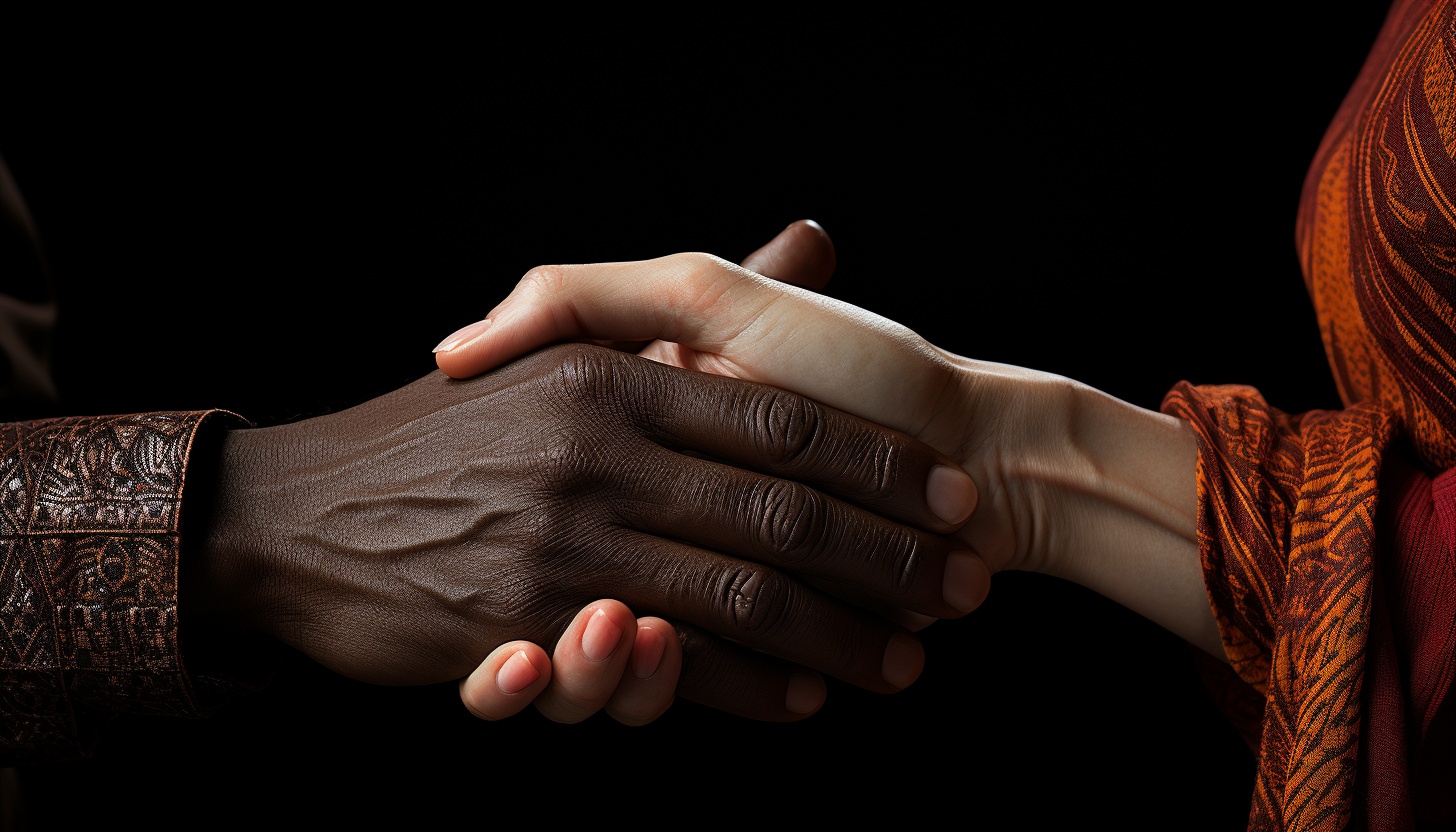
The Art of Touch: Using Physical Contact to Establish Connection
You think words are the only way to connect with others, but what if there was something more powerful?
Welcome to the art of touch, where physical contact becomes a tool for establishing deep connections.
In this article, we will explore how the simple act of touch can speak volumes, conveying emotions and building trust.
Get ready to delve into the world of non-verbal communication, as we uncover the secrets behind using touch to strengthen your relationships.
The Power of Physical Touch

Using physical touch has a powerful impact on establishing connection. When it comes to human interaction, touch plays a crucial role in conveying emotions, building trust, and fostering deeper relationships. Whether it’s a warm handshake, a comforting hug, or a gentle pat on the back, physical touch has the ability to communicate non-verbally in ways that words alone cannot. It elicits a range of emotions, from happiness and comfort to empathy and reassurance.
Research has shown that touch releases oxytocin, often referred to as the ‘love hormone,’ which enhances feelings of trust and bonding. It creates a sense of safety and security, allowing individuals to let their guard down and feel more connected to one another. Furthermore, physical touch can also help alleviate feelings of stress and anxiety, promoting overall well-being and emotional stability.
Understanding the power of physical touch is essential in establishing and maintaining healthy relationships. It requires sensitivity and respect for personal boundaries, as touch can be interpreted differently by different individuals. By being mindful of others’ comfort levels and using touch appropriately, we can create an environment of openness and connection.
As we delve into the next section on understanding non-verbal communication, it’s important to recognize that touch is just one aspect of the complex web of non-verbal cues that shape our interactions. By exploring these different forms of communication, we can gain a deeper understanding of how to connect with others on a more profound level.
Understanding Non-Verbal Communication

To better understand non-verbal communication, it’s important to recognize that it encompasses a wide range of cues that shape our interactions with others. Non-verbal cues can sometimes speak louder than words, revealing our true thoughts and feelings.
Here are three key aspects of non-verbal communication that can greatly impact our relationships:
– Body language: Our posture, gestures, and facial expressions can convey a wealth of information about our emotions and intentions. For example, crossed arms may indicate defensiveness or resistance, while a warm smile can signal friendliness and openness.
– Tone of voice: The way we speak, including our pitch, volume, and rhythm, can greatly influence how our message is received. A soft and soothing tone can convey empathy and understanding, while a harsh tone may indicate anger or frustration.
– Personal space: The distance we maintain between ourselves and others can send important signals about our comfort level and relationship dynamics. Invading someone’s personal space without permission can be seen as aggressive, while standing too far away can signal disinterest.
Understanding these non-verbal cues can help us navigate social situations more effectively, fostering deeper connections and enhancing our communication skills. By paying attention to the subtle messages conveyed through non-verbal communication, we can better connect with others and build stronger relationships.
Building Trust Through Touch

When you incorporate physical contact into your interactions, you can establish a deeper sense of trust. Touch has the power to convey a myriad of emotions and intentions, allowing you to connect with others on a more profound level. Research has shown that touch increases the release of oxytocin, a hormone associated with bonding and trust. By engaging in appropriate and respectful touch, such as a handshake, a pat on the back, or a comforting hug, you can create a safe and secure environment for meaningful connections to flourish.
Building trust through touch involves being mindful of personal boundaries and cultural norms. It’s crucial to respect the comfort levels and preferences of others, as touch can be perceived differently based on individual experiences and backgrounds. By approaching touch with sensitivity and consent, you can foster an atmosphere of trust and openness.
Moreover, touch can help to bridge communication gaps and convey empathy. A gentle touch on the arm during a difficult conversation can convey support and understanding. By incorporating touch into your interactions, you demonstrate your willingness to connect on a deeper level and create a sense of safety and understanding.
In the subsequent section about enhancing emotional connection, we’ll explore how touch can deepen emotional bonds and foster a greater sense of intimacy.
Enhancing Emotional Connection

To enhance emotional connection, cultivate meaningful physical touch with others. Physical touch has the power to deepen our emotional bonds and foster a sense of closeness and understanding. Here are three ways in which meaningful physical touch can enhance emotional connection:
– Hugs: Embrace someone in a warm, genuine hug to convey affection and support. Hugs release oxytocin, a hormone associated with bonding and trust, which can help strengthen emotional connections.
– Hand-holding: Holding hands creates a physical connection that can provide comfort and reassurance. It can also serve as a non-verbal way to communicate empathy and solidarity, especially during difficult or emotional moments.
– Back rubs: Offering a gentle back rub can be a soothing gesture that promotes relaxation and reduces stress. It can also be a way to show care and support, helping to build emotional connection and intimacy.
Using Touch to Strengthen Relationships

To further strengthen your relationships, incorporate intentional and regular physical touch into your interactions. Physical touch is a powerful tool that can deepen the bond between individuals and create a sense of closeness and connection. Whether it’s a warm hug, a gentle touch on the arm, or holding hands, these simple gestures can communicate love, support, and understanding in ways that words sometimes cannot.
When you engage in physical touch with your loved ones, it releases oxytocin, often referred to as the ‘love hormone,’ which promotes feelings of trust and attachment. This hormone plays a crucial role in building and maintaining healthy relationships. Touch can also reduce stress, lower blood pressure, and increase feelings of happiness and well-being.
Incorporating intentional physical touch into your daily interactions doesn’t have to be complicated. It can be as simple as a pat on the back, a kiss on the cheek, or a gentle squeeze of the hand. The key is to be mindful and present in these moments of touch, allowing yourself and your loved ones to fully experience the connection.
However, it’s essential to respect boundaries and consent when engaging in physical touch. Not everyone may be comfortable with certain types or levels of touch, so always communicate and ask for permission before initiating any physical contact.
Conclusion
In conclusion, the art of touch holds immense power in establishing connections and strengthening relationships.
Through physical contact, we can communicate emotions, build trust, and enhance our emotional connections.
By understanding non-verbal cues and utilizing touch in a respectful and empathetic manner, we can foster deeper connections with others.
So, why not explore the incredible potential of touch to enrich our relationships and create meaningful connections?






